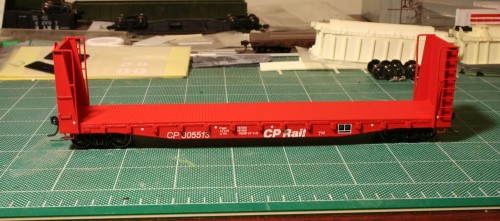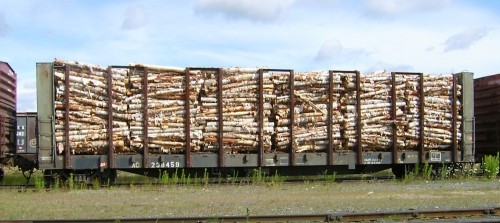Over the last week I’ve been managing to get a little bit of work done each evening on this car, and over the weekend, I got it painted, and after a few more evenings of work, the lettering on this car is basically completed. The car was lettered with a set from Highball Graphics for CP flatcars, with end reporting marks taken from another set, as they were unfortunately omitted (since regular flatcars would not have them, but the set is intended to be used for bulkheads as well, and any of those would have had them…)
The car number and logo in the prototype photo of the 305513 are actually a little smaller than on most CP Rail flatcars, so comparing the model to the photo the lettering is a little large, but short of having a custom set created for this car, this was close enough.
I only had photos of one side of the real car, but following standard CP Rail practice for flatcars the number and logo are located in different places on each side of the car.
All it needs now is a little weathering to give it a nice in-service look to finish it off.








